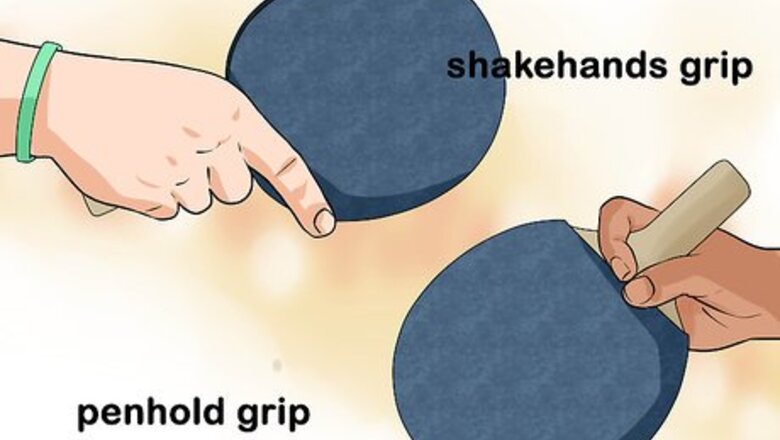
views
Choosing a Paddle Type
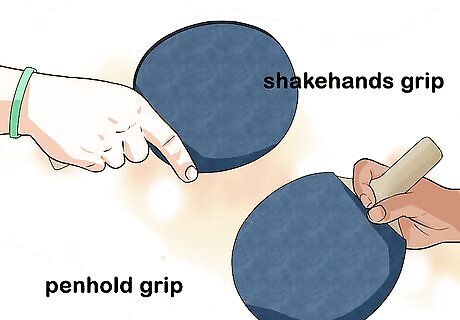
Figure out what grip you want to use. Think about the way you play and how different types of paddles might influence your performance. Decide which of the traditional grips is more comfortable for you. The most common grip in the West is the “shakehand” grip, which takes its name from the similarities in the way of holding your play hand to shaking hands with someone you just met. Other players might feel more in control when utilizing a “penhold” grip, in which the handle is gripped between the thumb and forefinger like a pen with the paddle held downwards. Try serving and returning the ball a few times with each grip before deciding which is better suited for your game. A shake hands grip will allow you to make returns with more force, as well as put spin on the ball, while playing with a penhold grip puts the arm in a more natural position to use quick, brushing strokes.

Start with a basic plastic or wood paddle. Pick up the cheapest paddle you can find when you’re first learning how to play. These basic paddles are usually made from one piece of molded plastic or a few thin layers of wood and offer no frills in terms of function or aesthetics. They can be very helpful when you’re just starting out, though, and you won’t have to break the bank buying a more expensive paddle that you aren’t enough good enough to take advantage of. A cheap, plain paddle can actually teach you to be more precise, as you’ll be forced to make sure you’re hitting the ball directly each and every time you serve and return.
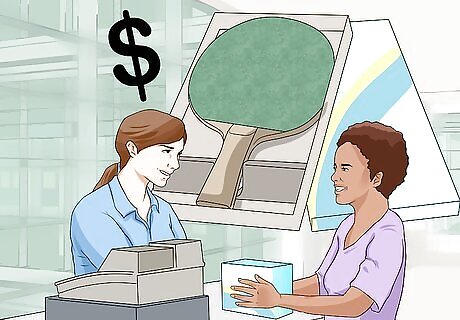
Buy a ready-made commercial paddle. Take a stroll through the tabletop games section of any sporting goods store to find a garden variety packaged ping pong paddle. These paddles are typically made taking a cookie cutter approach, with the same dimensions, materials and unsophisticated rubberized surface layer. For most recreational players, a basic store-bought paddle will be all they’ll ever need. Ping pong is more about technique than it is about equipment. A good player can dominate with a store-bought paddle. Commercial paddles can be purchased cheap and are sometimes sold in pairs or packaged with ping pong balls included.
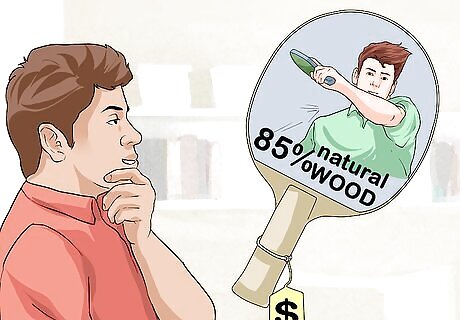
Try out a competition paddle. If you find yourself going through commercial paddles too quickly or you’re just looking for something a little more heavy duty, pick up a competition grade paddle. The official table tennis rulebook specifies that competition paddles be mad up of at least 85% natural wood, so they’ll have a bit of heft to them. Competition paddles are also put together using higher quality rubbers and adhesives, meaning they’ll last longer and hold up better to intense play. Professional paddles can usually be bought in the same places that sell basic commercial paddles, or you can order them online.
Finding a Reliable Paddle Surface
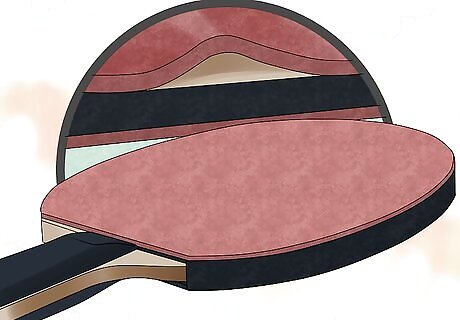
Play with a rubberized paddle to increase control. Make sure the paddle you’re playing with has rubber attached to at least one side. Most ping pong paddles have a thin sheet of rubber glued to the flat surface of the paddle. This adds traction to the face of the paddle and gives you more control over the ball. If your play style involves using a lot of spin to switch up the speed and direction of the ball, it’s important that you find a paddle with some good, grippy rubber. Having control over the ball means making it go where you want at the speed you want, without having to worry about the ball sliding or deflecting off the paddle. Almost all ping pong paddles are rubberized these days. However, the quality, durability and play characteristics of rubbers can vary greatly.
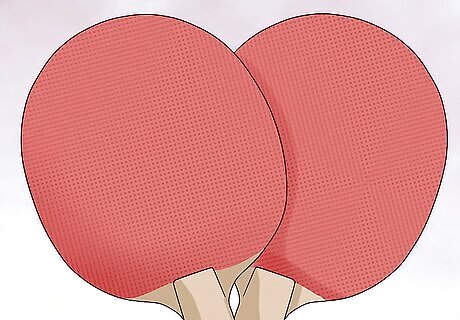
Look at different rubber textures. Play with a textured paddle to change the way you handle the ball. In addition to the rubber layer, some paddles also have textures known as “pimples,” “dimples” or “waffling” that grip the ball and help it stick briefly after it makes contact. For defensive players and people who like to decide the pace of a game, a textured paddle can make a big difference. With a textured paddle, you’ll have additional traction but give up a little bit of speed and reactivity on returns. Deep textures are not recommended for players who use a lot of spin techniques.
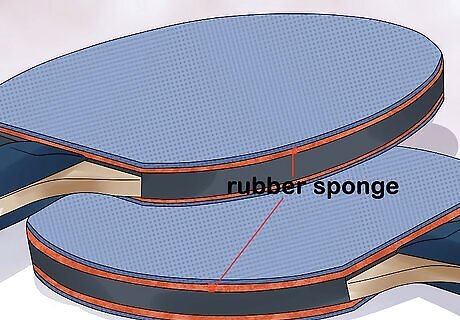
Consider how thick you want the rubber sponge to be. Decide whether you’d play better with a thicker or thinner rubber sponge. The sponge lies beneath the outer surface of the rubber to absorb impact and offer grip and control. It also changes the speed with which the ball can be returned. Thicker sponges make the paddle heavier and more dense, which lets you hit the ball with more speed. Thin layers of rubber, on the other hand, provide sensitivity and let you slow things down a bit. In addition to the type, softness and texture of the rubber, you have a choice of how thick you want the sponge.

Replace your paddle or rubber when it becomes worn out. The more you play with a paddle, the fast the rubber surface will begin to show signs of wear. When this happens, either replace the rubber and sponge or drop some money on a new paddle. Rubber that has been worn thin loses a lot of its grippiness and spring, which will compromise your technique. Look for places where the texturing is thinned out or feels less pronounced to the touch. If you tend to use commercial paddles, buy a new one once the old one is past its prime. If you play with a custom paddle, strip off the worn out rubber and attach a new one.
Using the Right Paddle for Your Play Style
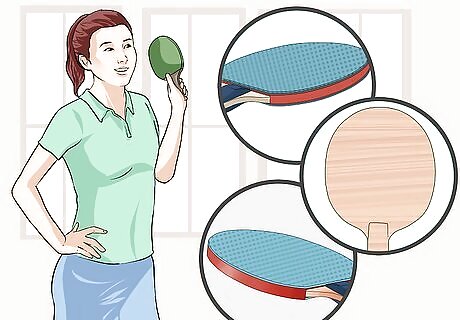
Select your own custom materials. More experienced players often pick and choose the materials that go into building their paddles to fine-tune their performance. Customize your paddle by deciding what type of wood you’d like to use for the construction, narrowing down a rubber that gives you the right balance of speed and control and incorporating other materials that alter the paddle’s specs. Built your ideal paddle by selecting and assembling each part individually. Other materials used in ping pong paddles include carbon fibers, which increase the strength of the paddle and gives it extra snap, and compressed paper, which reduces the paddle’s weight. After you’ve been playing long enough, you’ll start to form an idea of exactly what kind of paddle you need to be at your best.
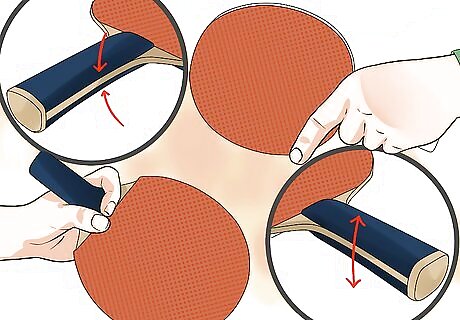
Choose a paddle that’s designed for your preferred grip. All ping pong paddles have the same basic shape, but certain types vary the width of the blade or the length and design of the handle to be better for specific play styles. For a classic shake hands grip, find a paddle with a thick, sturdy handle to give your stroke some authority. If you play with the penhold hand position, choose a lighter weight paddle with a longer, more narrow handle that permits quick brushing motions of the wrist. Some paddles are designed specially for players who favor a penhold grip. These paddles are longer and more ergonomic, and sometimes even include an extra fin of wood around the handle for added security.
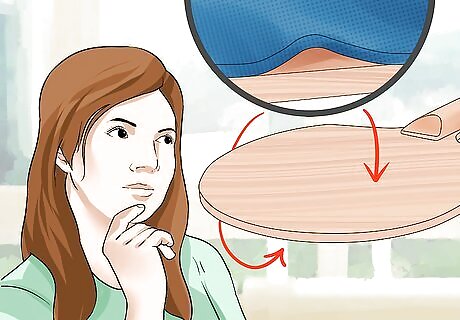
Decide whether you want rubber on one or both sides of the paddle. You’ve found a wooden blade you like, but do you rubberize just one side of the paddle or both? This is mostly a matter of preference. An additional rubber and sponge will add to the overall weight of the paddle, but you’ll have more control when alternating between forehand and backhand strokes. You might also choose to rubberize both sides of the paddle, but use a different texture and thickness for each side. That way, you’ll be able to switch between both sides of the paddle when you need to make different shots. Competitive players often use two different rubbers on their paddles, each with slightly different properties for more versatile strategies.
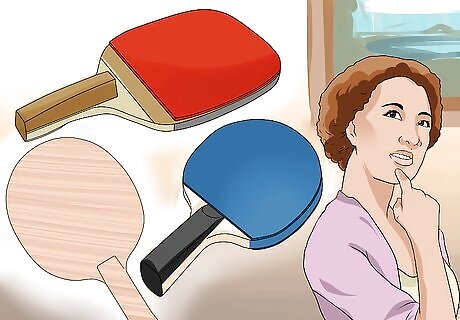
Experiment with different sizes and weights. Ping pong paddles are available in lots of sizes, shapes and styles. It can be worth trying out a few different types before settling on one you really like. Heavier paddles are better for offensive players who use quickness to win games, while lighter, more flexible paddles allow defensive players to regulate the speed and direction of the ball. Play with paddles of various weights and dimensions whenever you get the chance until you find out what works best for you. The weight of a paddle is determined by its thickness. Thicker paddles let you drive the ball with greater speed but sacrifice control. Thinner paddles offer the most control over the ball but tend to return a little slower. Each type of paddle has its own unique advantages and disadvantages. Again, it's about learning your strengths and weakness as a player and finding a paddle that is suitable for you.

















Comments
0 comment